 Life & Style
Life & Style

The Việt Nam Association for Conservation of Nature and Environment (VACNE) has recognised a group of 400 Pơ Mu (Fokienia hodginsii) trees in the forest of mountainous Tây Giang District in Quảng Nam Province as Heritage Trees.
 |
| Rich culture: A village of Cơ Tu people in Tây Giang district of Quảng Nam Province. — VNS Photo Công Thành |
QUẢNG NAM — The Việt Nam Association for Conservation of Nature and Environment (VACNE) has recognised a group of 400 Pơ Mu (Fokienia hodginsii) trees in the forest of mountainous Tây Giang District in Quảng Nam Province as Heritage Trees.
Deputy head officer of the district’s people’s committee Phạm Thành Hưng told Việt Nam News that this is the second group of the timber trees that has been found in the primeval forest. The first group of 725 gigantic Pơ Mu trees was included on the national heritage in 2015.
He said the district allocated 400ha surrounding the two groups of heritage trees as a strictly protected area.
 |
| Tree huggers: A gigantic Pơ Mu tree (Fokienia hodginsii) in Tây Giang forest. A group of 400 Pơ Mu trees has been recognised as Heritage Tree by the Việt Nam Association for Conservation of Nature and Environment. — Photo courtesy Tây Giang district |
VACNE said the trees have been well preserved by generations of members of the Cơ Tu ethnic group living in the district over the centuries.
The Pơ Mu tree, which was included in the International Union for Conservation of Nature (IUCN) red list of threatened species, has been grown in the
The most ancient trees are located inside a Pơ Mu forest on Zi’lieng mountain at 1,500m above sea level.
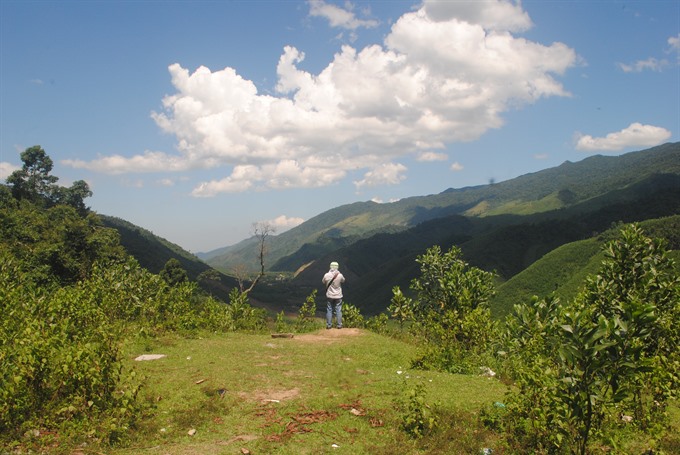 |
| Ancient greenery: A view of a valley of Tây Giang forest. — VNS Photo Công Thành |
According to the Tây Giang authority, there are more than 1,200 of the trees stretching across the two communes of A Xan and Tr’Hy. The biggest tree is nearly three metres in diameter and about 22m in height.
The precious Pơ Mu timber is high quality with a unique smell and beautiful wood grain.
The tree has been on the Việt Nam’s Red Book list of endangered species since 1996.
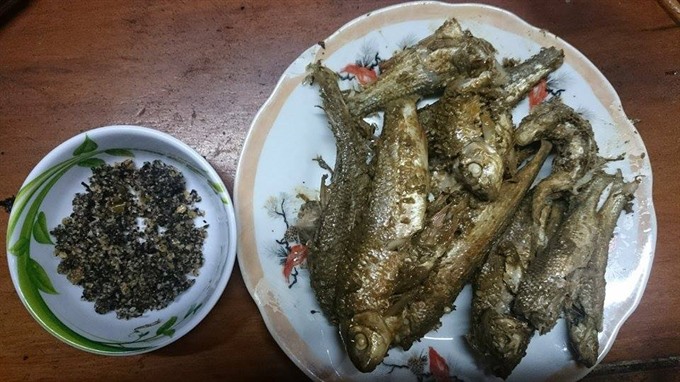 |
| Eat up: Grilled fish in bamboo tube is one of the traditional cuisines of Cơ Tu people, mostly living in Quảng Nam Province. — VNS Photo Công Thành |
In the district’s Axan Commune, another two Đa Sộp (Ficus trees) more than 700 years old were given national heritage recognition in 2015.
According to VACNE, 25 species of trees have been recognised as Việt Nam Heritage Trees in the Red River Delta.
Primeval forest covers three fourths of the district’s 90,000ha, providing a safe haven for endangered flora and fauna and sustainable incomes from timber.
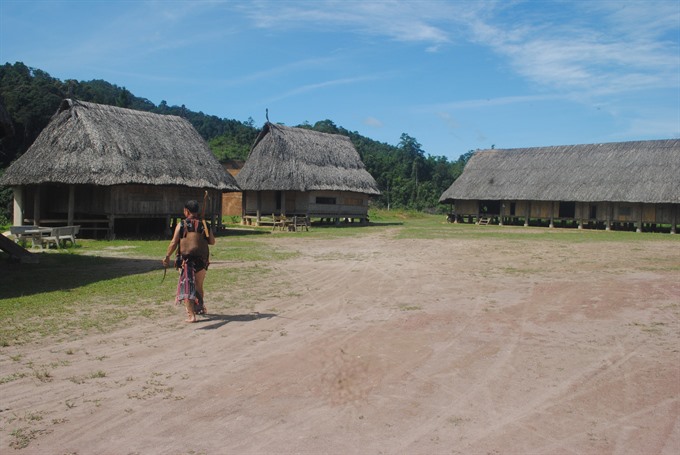 |
| Gather around: A centre of Cơ Tu culture is seen in A Tiêng commune of Tây Giang district in Quảng Nam Province. — VNS Photo Công Thành |
Book of Cơ Tu
Also at the event, the district also debuted the first -ever book of Cơ Tu Culture on the occasion of the 15th anniversary of the district’s establishment ceremony on August 8.
The 400-page book, which was written by the district’s Party Secretary B’H Riu Liếc, 54, and published by the Việt Nam Writers Association’s Publishing House, introduces the unique culture of Cơ Tu people.
Liếc, a native Cơ Tu man, has spent 11 years studying traditional farming practices and methods of forest protection among the Cơ Tu.
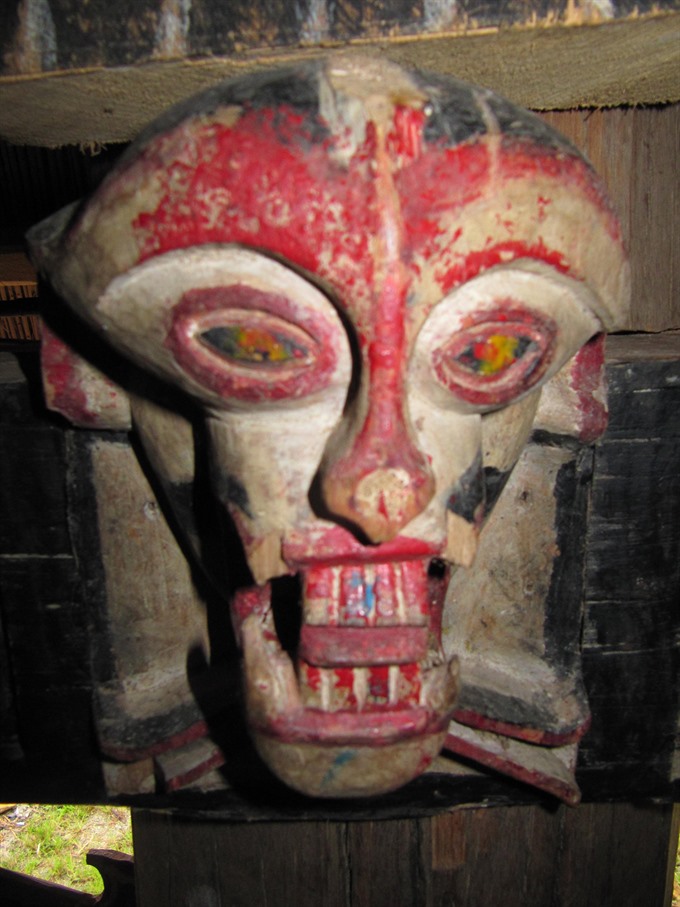 |
| Historic: A wooden carved mask is an art form of Cơ Tu people. — VNS Photo Công Thành |
He said he has collected the unique culture and customs of the ethnic group to introduce the traditional cultural treasures of Cơ Tu people to the entire country.
"The Cơ Tu first settled in the mountainous district over 1,000 years ago. They hold forests in spiritual awe, and forests have been treasured for generations," Liếc said.
“The book will help young generations of Cơ Tu people recall their ancestors and thousand of years of culture of the ethic group. I hope that the book will come to readers nationwide in the coming time,” he added.
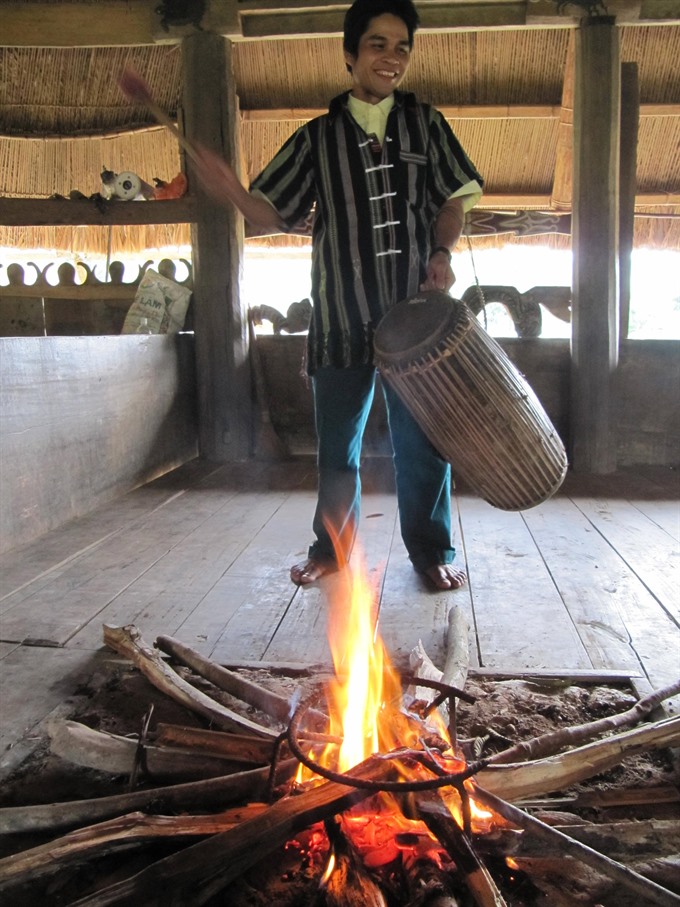 |
| Beating heart: A Cơ Tu native man plays drum at their traditional Gươl (long communal house) in Quảng Nam Province. — VNS Photo Công Thành |
He said he has been compiling a book of Cơ Tu scripts for teaching Cơ Tu children at school because many ethnic groups in Việt
The district, in co-operation with French photographer Rehahn, has been building the museum of the Cơ Tu community in Quảng
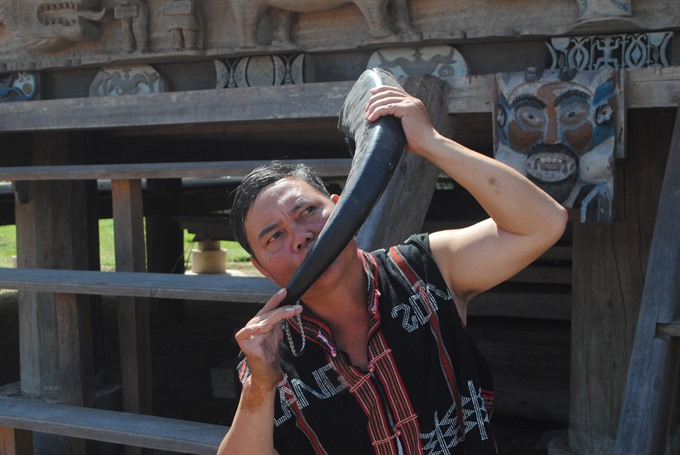 |
| Call out: A Cơ Tu man uses an instrument made by buffalo horn. — VNS Photo Công Thành |
Tây Giang still preserves the Gươl (long communal house of Cơ Tu people) which serves as the heart and soul of the community.
Tây Giang District is home to the largest Cơ Tu community in Việt









